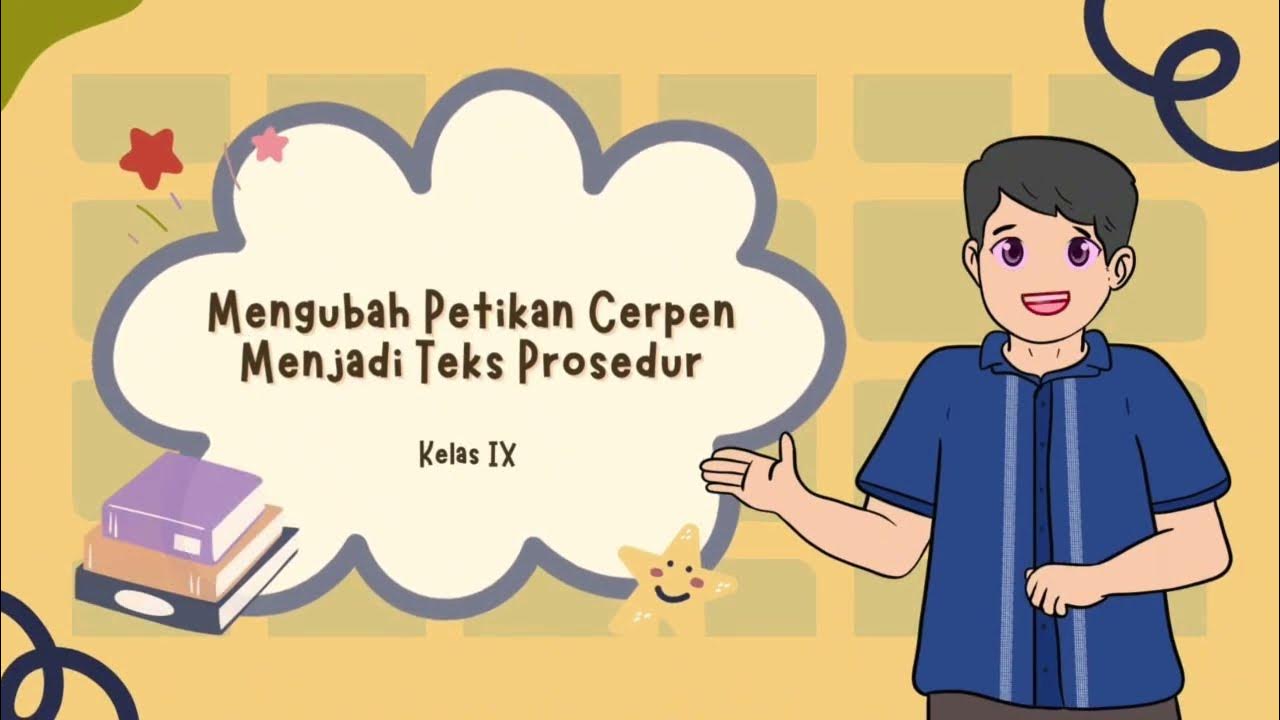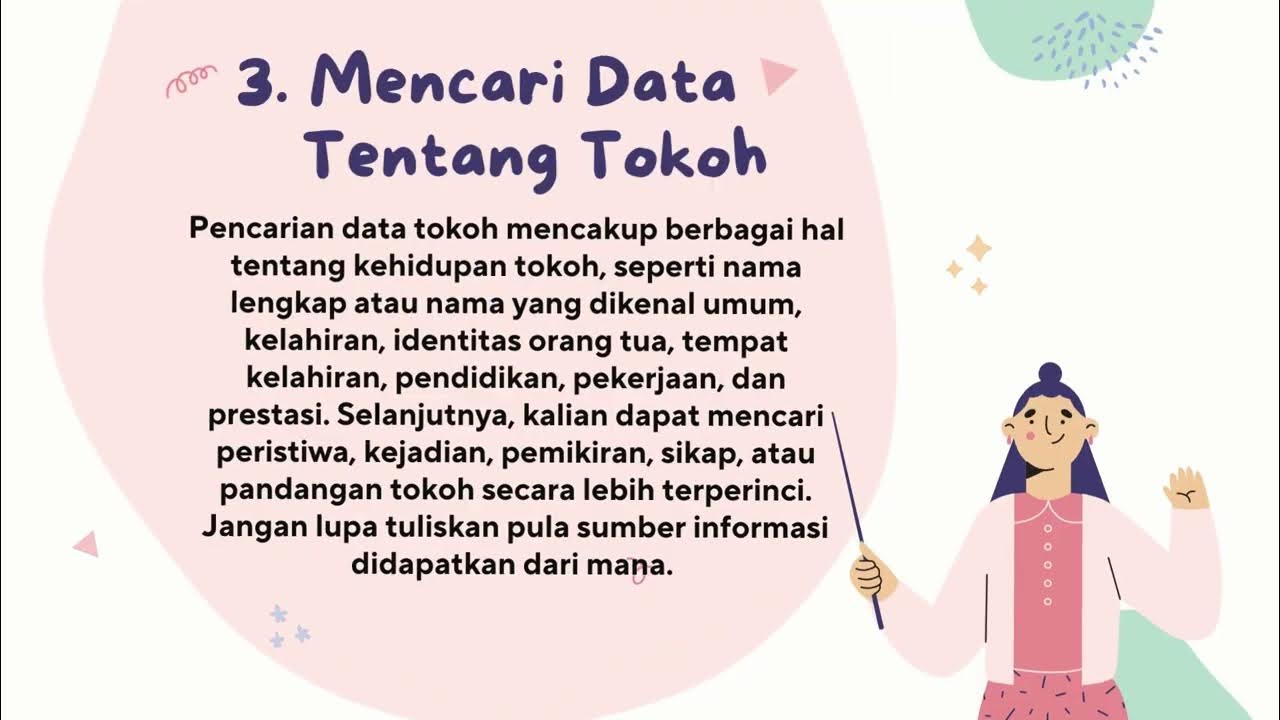Cara Membuat Cerpen yang Menarik & Nggak Basi! - Bahasa Indonesia Kelas 9 | Quipper Video
Summary
TLDRThis video provides a step-by-step guide on how to write a short story, covering key stages such as determining the story idea, creating an outline, developing the plot, choosing a title, and revising the story. It emphasizes sources of inspiration like personal experiences, observed phenomena, and imagination. The video also explains the importance of structuring the story and developing characters, setting, and themes. An example is given of writing a short story based on a snorkeling experience, and the video concludes with a review of narrative elements and language features that enhance storytelling.
Takeaways
- 😀 Begin by determining the story idea, which can come from personal experiences, others' experiences, phenomena, or even imagination.
- 😀 Create an outline by considering the structure of a narrative text, including the beginning, conflict, problem appearance, and resolution.
- 😀 Develop the outline into a full story, incorporating characters, settings, time, and atmosphere, while considering both intrinsic and extrinsic elements.
- 😀 Choose an engaging title for your story to attract readers' attention and make them curious.
- 😀 Review and revise the story to check for missing parts, errors, or areas that need improvement, such as adding dialogues or refining the cause-and-effect relationships.
- 😀 Use real-life phenomena or experiences, such as a snorkeling experience with jellyfish, to inspire story ideas.
- 😀 Example: When writing a story about snorkeling and being stung by jellyfish, outline the events such as vacationing at the beach, snorkeling, getting stung, and the consequences.
- 😀 When writing, remember to flesh out the characters’ personalities, the setting, and develop a coherent narrative with a clear structure.
- 😀 After writing, select a compelling title that reflects the story's theme, like 'Encounter with Transparent Creatures during Vacation.'
- 😀 Review the text for errors and inconsistencies and seek feedback from others to improve the writing.
- 😀 Remember the six intrinsic elements of a story: character and characterization, plot, theme, setting, message, and point of view.
- 😀 Additionally, be aware of the extrinsic elements, such as moral, social, cultural, and educational values present in the story.
Q & A
What is the first step in writing a short story according to the script?
-The first step in writing a short story is to determine the story idea. This idea can be sourced from personal experiences, the experiences of others, phenomena, or pure imagination.
How can personal experiences serve as an idea for a short story?
-Personal experiences can serve as a source of ideas when a writer reflects on significant events or problems they have faced. These experiences can be transformed into fictional stories.
What other sources can be used to determine a short story idea, besides personal experiences?
-Besides personal experiences, short story ideas can come from the experiences of others, phenomena or events witnessed in the world, or even from the writer's imagination or fantasy.
What is the second step in writing a short story?
-The second step is to create an outline for the story, ensuring that it follows the structure of a narrative text. The outline should cover the initial events, the conflict, and the resolution.
What elements should be included in the outline of a short story?
-The outline should include the initial events, the conflict or problem that arises in the story, and the resolution or how the problem is solved.
How should the outline be developed into a full story?
-Once the outline is created, it should be expanded into a full story by developing the characters, their traits, the setting, the plot, and integrating values and life lessons.
Why is it important to give a story an attractive title?
-An attractive title is important because it captures the attention of potential readers, making them curious about the story and more likely to read it.
What should a writer do after finishing their short story?
-After finishing the story, the writer should review and revise it. This involves checking for errors, ensuring the story makes sense, and making any necessary corrections or additions to improve the text.
What intrinsic elements are important to consider when writing a short story?
-Intrinsic elements include the characters and their development, the plot structure, the theme, the setting, the moral or lesson, and the point of view from which the story is told.
What are extrinsic elements in a short story, and why are they important?
-Extrinsic elements are the external values, such as religious, moral, social, cultural, and educational values, which influence the narrative and provide deeper meaning to the story.
Outlines

This section is available to paid users only. Please upgrade to access this part.
Upgrade NowMindmap

This section is available to paid users only. Please upgrade to access this part.
Upgrade NowKeywords

This section is available to paid users only. Please upgrade to access this part.
Upgrade NowHighlights

This section is available to paid users only. Please upgrade to access this part.
Upgrade NowTranscripts

This section is available to paid users only. Please upgrade to access this part.
Upgrade NowBrowse More Related Video

ChatGPT Prompt Engineering: How to Write a Story

Brandon Sanderson's 9 Step Outlining Method

Mengubah Petikan Cerpen Menjadi Teks Prosedur | Video Kreatif | Nobel Rajendra Riyanto

Langkah-langkah menulis teks biografi

LANGKAH LANGKAH MEMBUAT PRODUK DIGITAL YANG LARIS MANIS!

TERNYATA BEGINI URUTAN PENULISAN ARTIKEL DAN KARYA TULIS ILMIAH YANG BAIK DAN BENAR!
5.0 / 5 (0 votes)